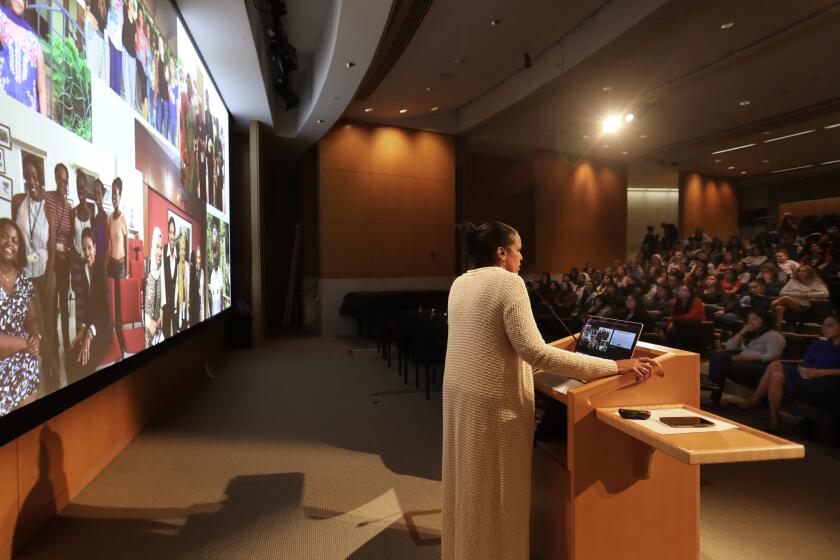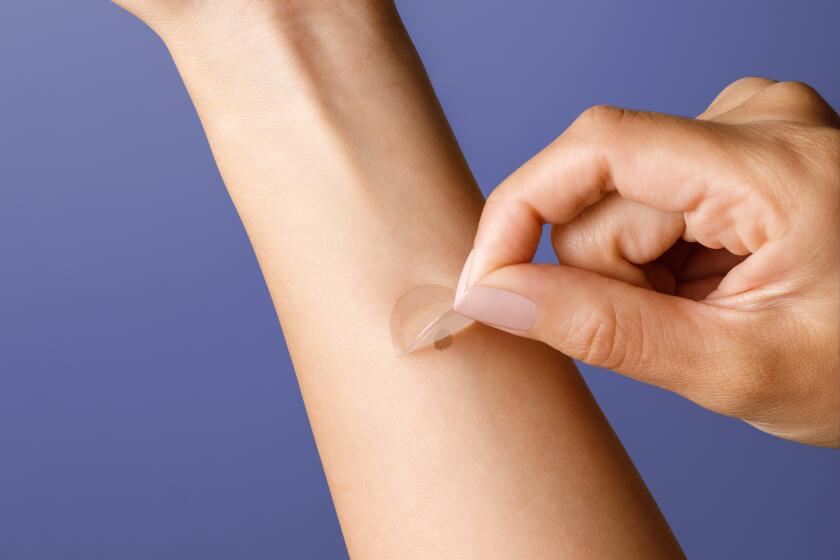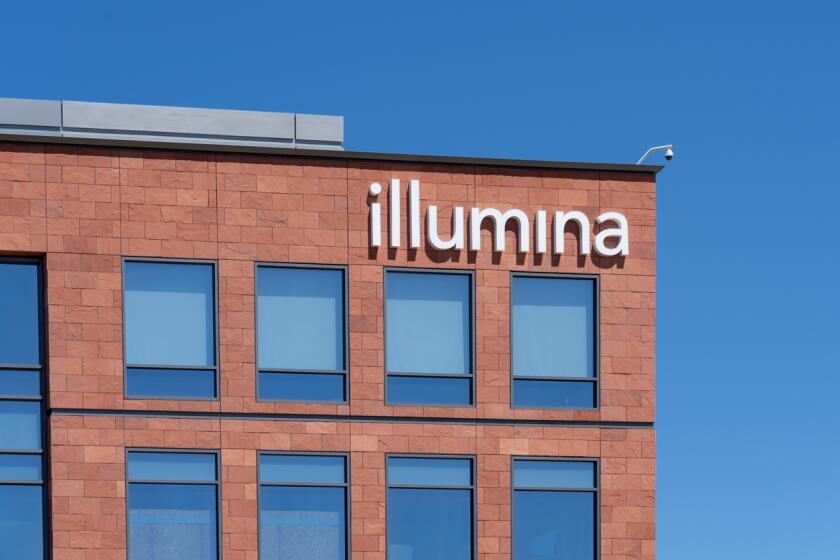Ebola treatment worked on monkeys
An experimental Ebola drug developed in San Diego protected all monkeys infected with the deadly virus in lab testing, according to a study published Friday in the journal Nature.
The research provides more promise that ZMapp, from Mapp Biopharmaceutical in Sorrento Mesa, could help human patients fight off the outbreak raging across much of West Africa.
In the study, 18 rhesus macaques were given ZMapp up to five days after infection. All of them survived.
“The level of improvement was utterly beyond my honest expectation,” said one of the study’s leaders, Gary Kobinger of the Public Health Agency of Canada in Winnipeg.
“For animal data, it’s extremely impressive,” said Dr. Anthony Fauci, director of the National Institute of Allergy and Infectious Diseases, which had a role in the work.
It’s unknown how well ZMapp — a combination of three antibodies — would work in people, where Ebola can take up to 21 days to show symptoms. That determination requires a clinical trial, which could begin late this year or in early 2015.
The new study “provides a lot of hope that (ZMapp) could be used where it is desperately needed in West Africa,” Erica Ollmann Saphire, an Ebola researcher at The Scripps Research Institute in La Jolla, said by email Friday. She collaborates with Mapp Biopharmaceutical and runs a seven-nation consortium that’s on a quest to find the best antibody combinations against Ebola.
A placebo-controlled, double-blind study would be the best evidence of efficacy, she said. In double-blind studies, neither patients nor those running the study know if a placebo or the real drug is being given.
Several experts said it’s not possible to estimate a window of opportunity for treating people with Ebola, but that it was encouraging to know all the monkeys given ZMapp recovered even after advanced disease had developed.
Two of the antibodies in ZMapp attack Ebola by binding to a protein on the virus that’s needed for it to invade cells. They’re known to be “neutralizing” — that is, they prevent cell entry, Scripps Research scientist Charles Murin said Wednesday during a public forum on Ebola. Murin helps Ollmann Saphire analyze the structure of Ebola and potential antibodies against it.
Researchers have theorized that the neutralizing antibodies attach to the base of the viral protein, stopping it from connecting to cells, Murin said. The third antibody appears to serve as a beacon to the immune system, signaling it to attack the virus.
Those inferences were made in part by mapping the structure of the antibodies and protein-binding sites, and by comparing them with other antibodies, Murin said. Many other neutralizing antibodies bind at the same region.
Further research is under way to validate this line of reasoning, Murin said.
Primates to people
Primates have been good stand-ins for people when scientists look at viral diseases, but how well they predict human responses to Ebola, “we just don’t know,” said Dr. Cameron Wolfe, an infectious-disease specialist at Duke University. The new study also “tells us nothing about side effects” people might have, he added.
That study involved scientists from the Canadian health agency, Mapp Biopharmaceutical, the U.S. National Institutes of Health and the U.S. Army Medical Research Institute of Infectious Disease.
The monkeys were given lethal amounts of Ebola in a shot, then received three intravenous doses of ZMapp, given three days apart starting three to five days after they were infected. Some of the monkeys were showing severe symptoms such as excessive bleeding, rashes and adverse effects on their liver.
All of the monkeys that received ZMapp survived. The three that didn’t died within eight days.
Ollmann Sapphire said she’s confident that ZMapp will be found effective in humans.
“Given its tremendous efficacy in the nonhuman primates, I don’t see how it couldn’t be helpful in people,” she said.
However, there are different varieties of the Ebola virus. A key question is: How broad will ZMapp’s protection be against all those varieties?
The new study provided evidence of cross-strain protection, according to an accompanying journal article by Thomas Geisbert of the University of Texas Medical Branch at Galveston.
While researchers only infected the monkeys with the Kikwit variety, separate cell cultures showed that ZMapp inhibits replication of the Guinean variant, Geisbert wrote.
Ollmann Sapphire said in her email that changes in the virus are only of concern if they affect the places where ZMapp binds to the viral protein.
Mapp Biopharmaceutical recently said it had run out of ZMapp after its very limited supply was given free of charge to several patients on an emergency basis. Once a new batch is ready, it will need to undergo some basic tests before it can be tried again on people infected in the West African outbreak, said Fauci at the National Institute of Allergy and Infectious Diseases.
Mapp Biopharmaceutical couldn’t be reached for comment Friday.
Death toll mounts
Ebola has killed more than 1,500 people this year, and the World Health Organization said there could be as many as 20,000 cases before the outbreak is brought under control. Most of the infections have occurred in Liberia, Guinea or Sierra Leone, with a much smaller number in Nigeria.
On Friday, Ebola spread to a fifth African country — Senegal, where a university student who traveled there from Guinea was being treated.
There is no approved vaccine or specific treatment for the disease, just supportive care to keep patients hydrated and nourished. Efforts have focused on finding patients and tracking their activities to limit the disease, which spreads through contact with blood and other fluids.
Of the seven people known to have been treated with ZMapp, two have died — a Liberian doctor and a Spanish priest. The priest received only one of three planned doses.
Two Americans — Dr. Kent Brantly and Nancy Writebol, both aid workers — and two Africans who received the drug in Liberia have all recovered.
A British nurse also got ZMapp, reportedly the two unused doses left over from treating the Spanish priest.
The Associated Press contributed to this report.
Get U-T Business in your inbox on Mondays
Get ready for your week with the week’s top business stories from San Diego and California, in your inbox Monday mornings.
You may occasionally receive promotional content from the San Diego Union-Tribune.








